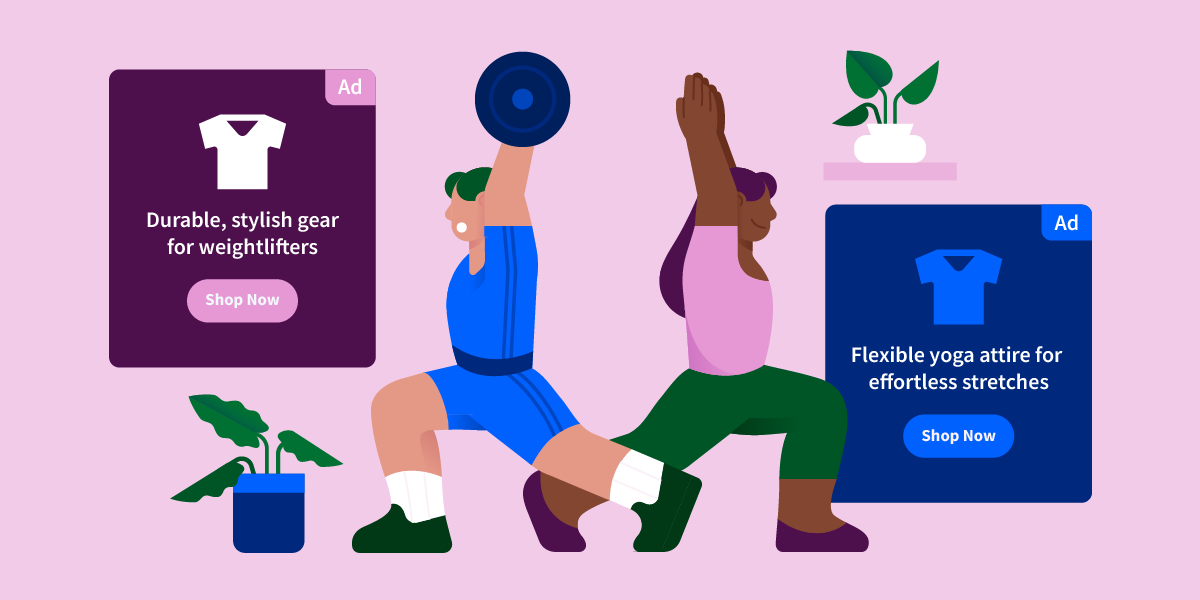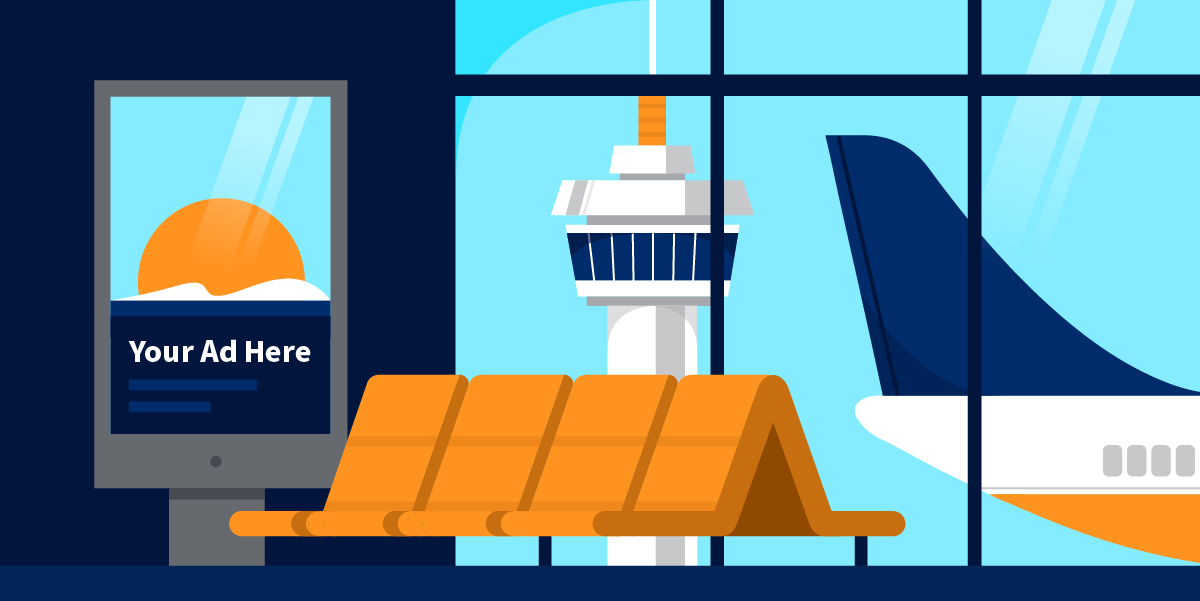Being in advertising these days is quite the adventure—especially when you consider that a whopping 80% of shoppers are more into brands that get personal with them.
In fact, companies focused on personalization have witnessed revenue boosts of 6% to 10%.
However, creating these personalized experiences is far from straightforward.
One of the most pressing challenges is the impending obsolescence of third-party cookies. For years, cookies have been a cornerstone of digital advertising, enabling brands to track user behaviour across the web and delivering highly-targeted ads.
But with privacy concerns on the rise and major browsers phasing out support for third-party cookies, advertisers are faced with the daunting task of finding new ways to personalize ads without relying on the depth of data cookies provided.
This shift demands a reevaluation of strategies and tools for gathering insights and engaging with audiences in a personalized manner.
One such new strategy is to focus on emerging advertising channels like connected TV (CTV), digital out-of-home (DOOH), and in-game advertising.
Some advertisers are still on the fence about these channels, skeptical about their efficacy. However, the industry is now facing a turning point. The landscape is changing, and to stay relevant, adapting is not just an option—it’s a necessity. The digital advertising world is moving forward, and it waits for no one.
These platforms offer innovative ways to reach audiences, backed by advanced targeting technologies that don’t rely on traditional cookies.
With these channels, advertisers have the potential to craft personalized advertising experiences that resonate deeply with viewers, leveraging context, content, and consumer behaviour in sophisticated and privacy-compliant ways.
Let’s explore how these emerging channels are not only overcoming the challenges of personalization in a post-cookie world, but are also setting new standards for engaging, effective advertising.
Getting Personal with Connected TV Advertising
Getting personal with your ads on TV is not easy. How do you even start to personalize when you’re broadcasting to the masses?
Well, that’s where the magic of programmatic advertising and targeting specific households comes into play, especially with connected TV (CTV) in the mix.
You no longer have to shoot expensive ads and hope for the best. Now, you can create different ad versions that feel like they’re tailor made for your customers. They may not shout their names from the rooftops, but they can be clever enough to make viewers feel like the advertiser gets them.
For example, imagine you’re launching a fitness apparel line. Instead of investing heavily in a one-size-fits-all commercial, you craft several ad variations targeting different fitness enthusiasts.
- One version highlights breathable fabrics for long-distance runners.
- Another shows the flexibility of the clothing for yoga practitioners.
- And a third emphasizes durability for weightlifters.
These ads are distributed through CTV, targeting users based on available identifiers. That way, viewers come across ads that speak directly to their fitness journey, creating a sense of personal connection with your brand.
The message is clear: “We understand exactly what you need.” This targeted approach feels personalized, increases engagement, and fosters brand loyalty.
This shift is opening up new creative playgrounds for ads that we couldn’t even dream of with old-school TV ads.
Considering that personalization most often drives 10 to 15 percent revenue lift, it’s clear this is more than just a trend—it’s the new frontier of connecting with clients.
Getting Creative with Digital Out-of-Home Advertising
Digital out-of-home (DOOH) might not have the same level of personal touch diversity as CTV, where you can reach households, but it’s got its own bag of tricks.
For example, you can switch up ads on the fly—no need to commit to a single billboard message for months. With DOOH, you can swap stories, update messages, or continue a narrative with speed.
Picture this: I’m driving home from the gym, passing the same digital billboard every day. One week, it’s one story; the next week, it morphs into the sequel. It’s like watching a mini-series unfold on my daily route.
That’s the magic of DOOH—its flexibility lets you tailor the narrative to the space and the audience passing by. Whether it’s CTV or DOOH, the name of the game is creative storytelling, leveraging the strengths of each channel to reach people in a way that’s both broad and personal.
DOOH reveals a stark contrast with the traditional digital ads that track users across devices, aiming for a one-on-one connection. DOOH spreads the net wider, inviting entire communities into the conversation. It’s about catching those communal moments, be it at the mall, at an airport, or along the highway—places where their daily routines intersect with these digital narratives.
And in this vast landscape of display and video, the possibilities for personal connection, though different in scale, become all the more creative and engaging.
See how a UK agency worked with StackAdapt to run their first-ever digital out-of-home (DOOH) at Scotland’s busiest airport. Download the case study.
Winning with In-Game Advertising
In-game advertising opens up fascinating opportunities in personalized marketing.
Gamers, known for their deep engagement and focused attention, represent a unique audience. They dedicate hours, fully immersed in their gaming experience, making them highly receptive to ads that seamlessly integrate into their virtual environment.
The key to capturing their attention is relevance and context. Data suggests gamers are not just passive observers, but active participants with a significant inclination to make purchases, provided these ads align with their interests and the gaming experience.
Imagine the potential of ads that offer in-game upgrades, expansions, or even real-world products like headsets or gaming chairs.
The effectiveness of such advertisements hinges on understanding gamer demographics and tailoring content that enhances, rather than disrupts, their experience. For example, an ad for Uber Eats could be a perfect fit within a gaming session, offering a convenient solution for players who don’t want to pause their progress. Conversely, promoting unrelated events or products might not resonate as strongly, underscoring the importance of matching ad content with the gaming context.
The success of in-game advertising, therefore, relies on a nuanced approach that considers the gaming environment and the player’s mindset. When executed thoughtfully, in-game ads can be incredibly effective.
Tracking and Measuring Success
At its core, tracking in programmatic advertising is about leveraging data across any platform, whether it’s a demand-side platform (DSP) or another programmatic ad platform.
The level of tracking detail you get is consistent across channels, offering insights into ad impressions, placements, and the frequency of those placements, not to mention the specific publisher or, in the case of digital out-of-home (DOOH), the precise location.
Traditional metrics like click-throughs might not apply in environments where interaction is non-clickable, but that doesn’t mean we’re out of options.
For instance, incorporating QR codes into ads opens up a whole new dimension of engagement tracking, mirroring the analytics depth we see on digital platforms. Through QR codes, advertisers can track direct interactions like website visits, page engagements, and even specific actions taken on the site, such as form submissions.
This approach unfolds a myriad of possibilities for engaging with audiences in innovative ways, ensuring that even in non-clickable ad environments, we’re not flying blind. The key lies in reimagining how we connect with viewers, transforming every ad placement into a potential interaction point.
‘Always Be Testing’ With Emergent Channels
At the heart of it, everything boils down to experimentation. Personalization’s success hinges on striking the right chord with your audience, and how can you be sure what will resonate unless you test it out?
The only way to truly evaluate the impact of your messaging is through trial and error. This is particularly true for broader applications, such as DOOH advertising, where an ad might hit the mark in one location, but not in others.
Consider the nuances of each location. An ad placed in an airport, for example, encounters a daily flux of diverse people, whereas a roadside billboard interacts with a more consistent group of commuters.
Through testing, you can refine your approach, tailoring narratives to fit the context of each site. For instance, running a sequence of ads along a busy street could culminate in a noticeable uptick in website visits or sign ups.
The immediacy of action can vary too. An ad at an airport, aimed at incoming travelers with a call to action that resonates with their specific journey, might prompt instant engagement, especially if it includes a QR code for easy access. For example, you can target ads to Chicago residents landing between 10AM and 2PM in New York City, inviting them to visit the New York Aquarium, using a special code. You’ll soon learn if your targeted message is hitting home.
But the insights don’t stop there. Gathering data from those who interact with your ad, especially through direct methods like QR codes, enriches your understanding of your audience.
Asking for basic information upon interaction can provide a wealth of data to refine your personalization efforts further. It’s through this iterative process of testing, gathering feedback, and adapting that truly personalized and effective advertising campaigns are born.
The Future of Personalized Advertising
The future of advertising looks promising, despite the current hesitation around sharing information and the widespread concern over the demise of cookies—a sentiment I find somewhat perplexing.
The fear that cookies might somehow upend the entire advertising world seems overblown.
After all, the digital ecosystem is rich with alternative identifiers. It’s a trade-off scenario: if you’re keen on using top-tier services like Google, for instance, sharing your search history is part of the bargain.
What excites me is the technological evolution on the horizon. New technologies are emerging that promise to refine how we identify patterns and target audiences, offering more sophisticated ad placements and innovative ways to showcase ads.
This progress means we’ll have an expanding array of tools at our disposal, making advanced advertising techniques more accessible than ever.
Consider how we’ve moved from the era of expensive TV and radio spots, where a hefty investment was required to make a splash, to today’s digital age, where a few hundred dollars and the right digital platform can launch your campaign.
The accessibility of advertising has transformed dramatically, and this trend is only set to continue.
Use the Tools at Your Disposal
Targeting is where the game changes. It’s what allows you to dive into CTV advertising without breaking a sweat, putting your ads exactly where they need to be and reaching the right audience with precision.
As you work to hone in on specific locations, focus on particular audience segments, or leverage first-party data, StackAdapt has you covered. And this is crucial because, let’s face it, navigating the world of CTV, in-game, and DOOH advertising and securing prime spots isn’t exactly straightforward if you’re going it alone.
That’s where the beauty of having an integrated platform like StackAdapt comes into play. It’s like having a key to an exclusive club that aggregates all the inventory you could ever dream of, making sure your ads land in the perfect spot without you having to cold-call every billboard owner or gym manager out there.
This level of access and ease is a game-changer—especially for smaller advertisers who might not have the clout of the big Fortune 500 companies. With our inventory and targeting capabilities, personalization isn’t just a buzzword; it’s your new reality.
Request a demo today to find out more.





